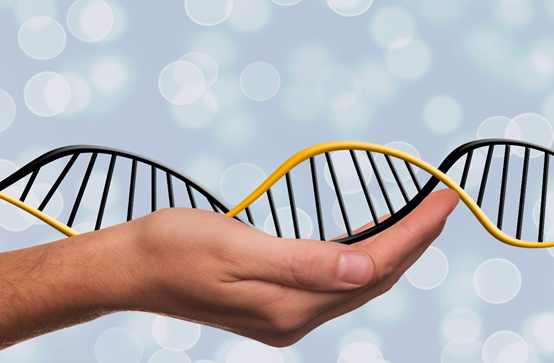While essential amino-acids can be found in a wide verity of foods; taking concentrated doses in the form of supplements have been shown to provide several health benefits.

Every Sunbio Collagen Peptides sachet contains a minimum of 4 grams of Premium quality Australian derived Collage Peptides per sachet. Collage Peptides contain 8 (Methionine, Histidine, Isoleucine, Leucine, Lysine, Threonine, Tryptophan, Phenylalanine, Valine) of the 9 essential amino acids.
Helps to Improve Mood and Sleep
Tryptophan is needed for the production of serotonin, a chemical that acts as a neuro-transmitter in your body. Serotonin is an essential regulator of mood, sleep and behaviors.
While low serotonin levels have been linked to depressed mood and sleep disturbances, several studies have shown that supplementing with tryptophan can reduce symptoms of depression, boost mood and improve sleep1, 2, 3, 4, 5.
One 19-day scientific study in 60 older women found that 1 gram of tryptophan per day led to increased energy and improved happiness, compared to those taking a placebo6.
Increase Exercise Performance
The three branched-chain essential amino-acids (Valine, Leucine, Isoleucine) are widely used in supplements to alleviate fatigue, improve athletic performance and stimulate muscle recovery after exercise.
In a scientific study in 16 resistance-trained athletes, branched-chain amino-acid supplements improved performance and muscle recovery and decreased muscle soreness, compared to a placebo7.
A recent review of eight studies conducted in 2017 scientists found that supplementing with branched-chain amino-acids was superior to rest in promoting muscle recovery and reducing soreness after exhaustive exercise8.
Additionally, another scientific study found that taking 4 grams of leucine daily for 12 weeks increased strength performance in untrained men, showing that essential amino-acids can also provide a benefit to the wider non-athlete community9.

Helps to Prevent Muscle Loss
The loss of muscle mass is a common side effect of prolonged illnesses and bed rest, especially in older adults. Essential amino acids have been found to prevent muscle breakdown and preserve lean body mass.
One 10-day scientific study in 22 older adults on bed rest showed that those who received 15 grams of mixed essential amino-acids maintained muscle protein synthesis, while the process decreased by 30% the participants of the placebo control group10.
In two different scientific studies essential amino-acid supplements have also been found to be effective in preserving lean body mass in elderly people and athletes11, 12.
May Promote Weight Loss
Some human and animal studies have demonstrated that branched-chain essential amino-acids may be effective in stimulating fat loss.
One eight-week scientific study in 36 strength-trained men found that supplementing with 14 grams of branched-chain amino acids per day significantly decreased body fat percentage, compared to whey protein or a sports drink13.
Another scientific study in rats showed that a diet composed of 4% supplemental leucine reduced body weight and fat14.
Recommended Daily Intake (RDI)
The recommended daily allowances (FDA) per 1 kg of body weight for the nine essential amino acids are:
Histidine: 14 mg
Isoleucine: 19 mg
Leucine: 42 mg
Lysine: 38 mg
Methionine (+ the non-essential amino acid cysteine): 19 mg
Phenylalanine (+ the non-essential amino acid tyrosine): 33 mg
Threonine: 20 mg
Tryptophan: 5 mg
Valine: 24 mg
Dietary Sources
Foods that contain all nine essential amino acids are referred to as complete/whole proteins.
These protein sources include:
· Meat
· Seafood
· Poultry
· Eggs
· Dairy Products
1. https://www.ncbi.nlm.nih.gov/pubmed/26805875
2. https://www.ncbi.nlm.nih.gov/pubmed/18648776
3. https://www.ncbi.nlm.nih.gov/pubmed/21488845
4. https://www.ncbi.nlm.nih.gov/pmc/articles/PMC1407729/
5. https://www.ncbi.nlm.nih.gov/pmc/articles/PMC4523676/
6. https://www.ncbi.nlm.nih.gov/pubmed/25572038
7. https://www.ncbi.nlm.nih.gov/pubmed/28177706
8. https://www.ncbi.nlm.nih.gov/pubmed/28870476
9. https://www.ncbi.nlm.nih.gov/pubmed/21487148
10. https://www.ncbi.nlm.nih.gov/pubmed/19419806
11. https://www.ncbi.nlm.nih.gov/pubmed/19208731
12. https://www.ncbi.nlm.nih.gov/pubmed/26733764
13. https://www.ncbi.nlm.nih.gov/pmc/articles/PMC3313152/
上一篇:The Role of Antioxidants in combating free radicals
下一篇:没有了!

 中文
中文